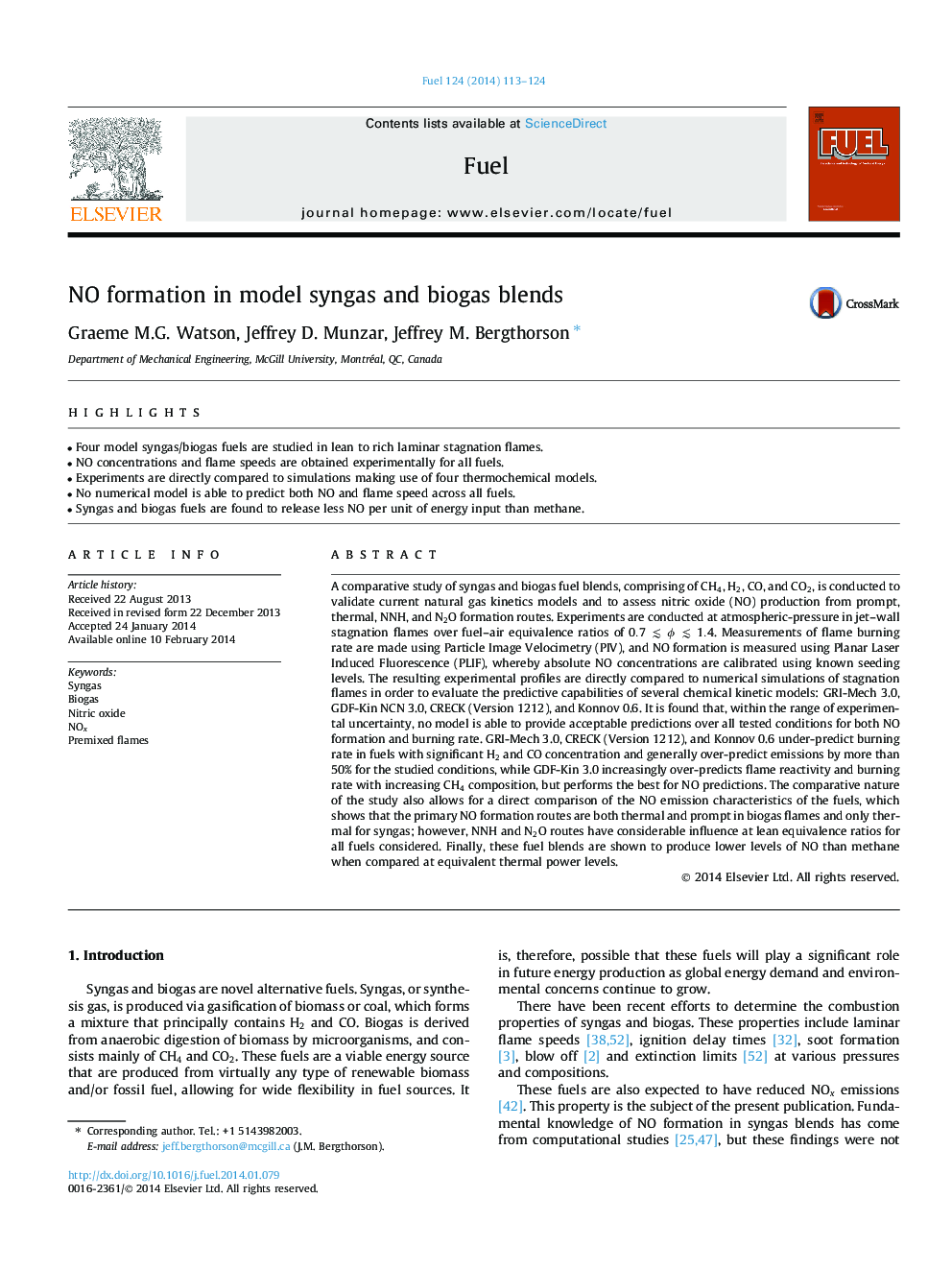| کد مقاله | کد نشریه | سال انتشار | مقاله انگلیسی | نسخه تمام متن |
|---|---|---|---|---|
| 6637940 | 461144 | 2014 | 12 صفحه PDF | دانلود رایگان |
عنوان انگلیسی مقاله ISI
NO formation in model syngas and biogas blends
دانلود مقاله + سفارش ترجمه
دانلود مقاله ISI انگلیسی
رایگان برای ایرانیان
کلمات کلیدی
موضوعات مرتبط
مهندسی و علوم پایه
مهندسی شیمی
مهندسی شیمی (عمومی)
پیش نمایش صفحه اول مقاله

چکیده انگلیسی
A comparative study of syngas and biogas fuel blends, comprising of CH4, H2, CO, and CO2, is conducted to validate current natural gas kinetics models and to assess nitric oxide (NO) production from prompt, thermal, NNH, and N2O formation routes. Experiments are conducted at atmospheric-pressure in jet-wall stagnation flames over fuel-air equivalence ratios of 0.7â²Ïâ²1.4. Measurements of flame burning rate are made using Particle Image Velocimetry (PIV), and NO formation is measured using Planar Laser Induced Fluorescence (PLIF), whereby absolute NO concentrations are calibrated using known seeding levels. The resulting experimental profiles are directly compared to numerical simulations of stagnation flames in order to evaluate the predictive capabilities of several chemical kinetic models: GRI-Mech 3.0, GDF-Kin NCN 3.0, CRECK (Version 1212), and Konnov 0.6. It is found that, within the range of experimental uncertainty, no model is able to provide acceptable predictions over all tested conditions for both NO formation and burning rate. GRI-Mech 3.0, CRECK (Version 1212), and Konnov 0.6 under-predict burning rate in fuels with significant H2 and CO concentration and generally over-predict emissions by more than 50% for the studied conditions, while GDF-Kin 3.0 increasingly over-predicts flame reactivity and burning rate with increasing CH4 composition, but performs the best for NO predictions. The comparative nature of the study also allows for a direct comparison of the NO emission characteristics of the fuels, which shows that the primary NO formation routes are both thermal and prompt in biogas flames and only thermal for syngas; however, NNH and N2O routes have considerable influence at lean equivalence ratios for all fuels considered. Finally, these fuel blends are shown to produce lower levels of NO than methane when compared at equivalent thermal power levels.
ناشر
Database: Elsevier - ScienceDirect (ساینس دایرکت)
Journal: Fuel - Volume 124, 15 May 2014, Pages 113-124
Journal: Fuel - Volume 124, 15 May 2014, Pages 113-124
نویسندگان
Graeme M.G. Watson, Jeffrey D. Munzar, Jeffrey M. Bergthorson,